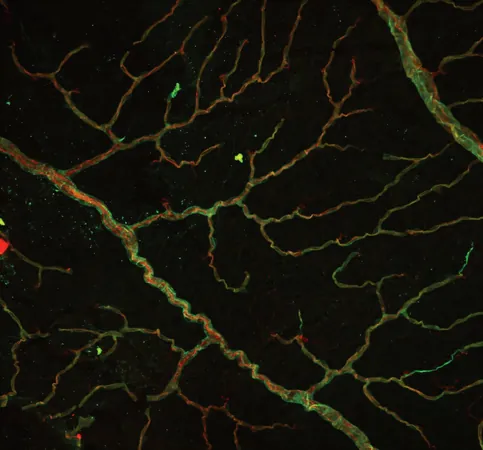
Revolutionizing Surgery: The Breakthrough of Scarless Adhesiolysis Using Transumbilical Techniques
2025-08-18
Author: Rajesh
Say Goodbye to Scars: The Future of Adhesiolysis
Imagine a surgical procedure that minimizes trauma, reduces recovery time, and leaves no visible scars! The innovative approach of transumbilical endoscopic surgery (TUES) promises to transform how we treat adhesive intestinal obstructions. This condition, commonly arising from postoperative adhesions, affects over 60% of intestinal obstructions, leading to chronic pain and significant discomfort in patients.
The Painful Reality of Postoperative Adhesions
Intestinal obstructions result in immense suffering and frequent hospital readmissions. Remarkably, over 30% of patients find themselves back in the hospital within five years post-surgery. While traditional surgical methods like open adhesiolysis alleviate adhesions, they come with the unfortunate side effects of increased risks of infection, hemorrhage, and further adhesions.
Laparoscopic Surgery: A Step Forward, But Not Perfect
Laparoscopic adhesiolysis has gained traction for its minimally invasive nature, yet it still requires several incisions, leaving significant scars. Additionally, the high pressure used during these surgeries can lead to complications, potentially spurring new adhesion formation.
Transumbilical Endoscopic Surgery: The Game Changer
Enter TUES—a cutting-edge method that utilizes the natural orifice of the umbilicus to perform surgery, resulting in a nearly scar-free outcome. This method leverages advanced endoscopic technology to navigate the abdominal cavity, providing surgeons with flexible tools that enhance surgical precision and reduce trauma. Unlike traditional methods, TUES maintains superior visibility and reduces the risk of infection, truly setting a new standard in surgical practice.
The Study: Groundbreaking Results from Animal Trials
A recent study tested the safety and effectiveness of TUES for adhesiolysis using beagle models, demonstrating its potential to alleviate symptoms without serious complications. With no new adhesions observed three months post-op, TUES showcases a promising alternative to current practices.
Ethical Considerations and Surgical Precision
Conducted with rigorous ethical standards, the study highlights the importance of precision in this emerging surgical method. With the ability to perform an entire procedure through a tiny umbilical incision, this technique significantly minimizes patient discomfort and surgical risks.
What's Next for TUES?
As TUES shows immense promise, the need for extensive clinical trials is essential for broader application. The focus is on patient selection, ensuring this technique is limited to cases of localized mild adhesions to guarantee safety and efficacy. There's a clear path forward, suggesting TUES could be the gold standard for treating adhesive intestinal obstructions.
The Future of Surgery is Now!
With the surge of minimally invasive techniques, TUES stands poised to revolutionize surgical practices, much like laparoscopic surgery did in the past. As we move towards a more refined and patient-friendly approach in medicine, the potential of TUES highlights an exciting era of surgical innovation.

 Brasil (PT)
Brasil (PT)
 Canada (EN)
Canada (EN)
 Chile (ES)
Chile (ES)
 Česko (CS)
Česko (CS)
 대한민국 (KO)
대한민국 (KO)
 España (ES)
España (ES)
 France (FR)
France (FR)
 Hong Kong (EN)
Hong Kong (EN)
 Italia (IT)
Italia (IT)
 日本 (JA)
日本 (JA)
 Magyarország (HU)
Magyarország (HU)
 Norge (NO)
Norge (NO)
 Polska (PL)
Polska (PL)
 Schweiz (DE)
Schweiz (DE)
 Singapore (EN)
Singapore (EN)
 Sverige (SV)
Sverige (SV)
 Suomi (FI)
Suomi (FI)
 Türkiye (TR)
Türkiye (TR)
 الإمارات العربية المتحدة (AR)
الإمارات العربية المتحدة (AR)